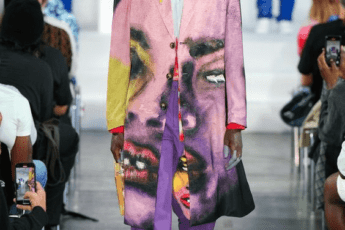Kering conglomerate with a climate decision

Kering is a French luxury conglomerate that includes fashion giants such as, Gucci, Saint Laurent, Alexander McQueen, or Balenciaga. Together with LVMH, these are the two largest concerns focusing on luxury fashion. It is headed by François-Henri Pinault, who also chairs the foundation of the same name, which deals with the problem of violence against women around the world. In addition, the conglomerate is involved in many other social activities, supports the development of young talents and cooperates with art universities.

Last Friday, Kering officially committed to reducing greenhouse gas emissions by 40% by 2035. This idea fits into the vision of responsible luxury and complements its developing vision sustainable development strategy. This is a huge step towards a climate revolution in the fashion industry. What exactly is Kering promising and what impact will this decision have?
Luxurious fashion and atmosphere
How does the fashion industry affect the climate? We now have enough information to know that fashion is a major contributor to negative changes in our climate. It is estimated that the fashion industry is responsible for as much as 2 to 8 percent of global CO2 emissions. To put it in perspective, this is more than air, sea and shipping combined. The statistics on water consumption are even more shocking – approximately 215 trillion liters of water are used by industry each year.
Additionally, fast fashion clothes are produced on a huge scale and over half of global production goes to landfills. All this contributes to massively driving the consumption of goods. Luxury products are definitely more durable. With a focus on high-quality materials, they are built to last longer than mass-market goods. And this, in turn, requires less demand for incineration and textile waste. Additionally, the elitism of luxury clothes means that these products are available in much smaller quantities.
Therefore, although the luxury fashion segment undoubtedly contributes to the climate catastrophe, it is a much smaller percentage. Exclusive brands can afford to produce fewer specialized and well-made products. Most of them have already taken steps to improve the climate situation, knowing that they can act for the climate even if it involves increasing costs.
Balanced development
Global luxury fashion giants have been slowly entering the path of sustainable development for several years. It turns out that Kering was not the first to make his statement, LVMH has also been aiming to reduce Scope 1 and 2 emissions (greenhouse gas emissions from energy use in plants and stores) for some time now. by 50% by 2026 aims to reduce Scope 3 greenhouse gas emissions per unit of value added by 55% by 2030.
Prada is also trying to reduce its carbon footprint, which already in 2021 has achieved the goal of transforming its distinctive line of nylon clothes and accessories entirely into recycled material. The brand currently produces over 100 million yards annually of its Re-Nylon fabric from plastic and consumer waste.
What is Kering planning?
“We are now setting this new absolute target, covering bands 1, 2 and 3 of the Greenhouse Gas Protocol, because if we want to truly decarbonize our global businesses, we must move from carbon intensity reductions to absolute reductions,” said François-Henri Pinault.
As we mentioned, Kering manages luxury companies, including but not limited to Gucci, Saint Laurent, Bottega Veneta, Balenciaga, Alexander McQueen. Its impact on brands and their policies is significant, so all this points to positive changes in the future. Kering is scheduled to release its Sustainability Progress Report 2020-2023, which will describe its new biodiversity strategy. Kering once again demonstrates its commitment to bringing positive change and impact to industries. This step will undoubtedly bear fruit in the near future.





Leave a Comment